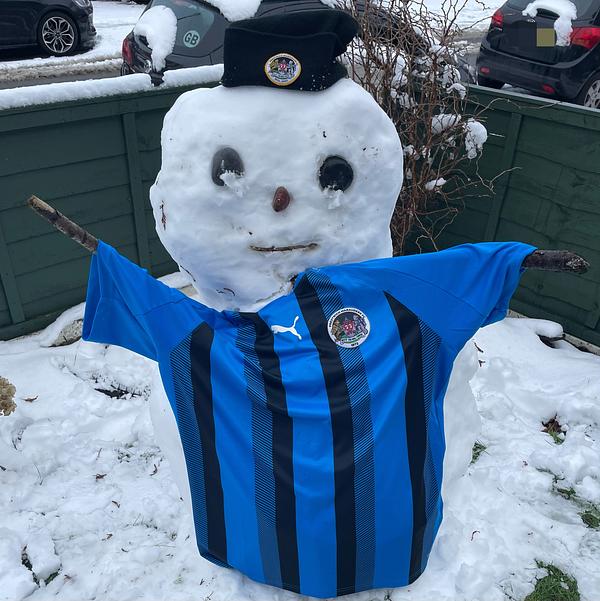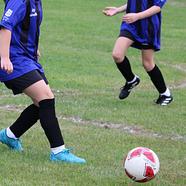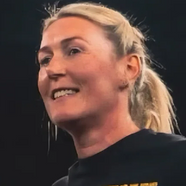In the interests of player safety the club has taken the decision to cancel all home games scheduled to take place at St Mary's Park, as the pitches are frozen and surrounding areas are icy.
Many leagues are leaving decisions over whether to play or not to the home side or referee (if applicable).
For leagues using central venues (meaning all games are played at one place), decisions are expected before the weekend.
Club coaches should be letting parents know their relevant situations as soon as possible and if any parents are concerned about their children playing, please discuss this with your team's manager/coaches.
To get a better understanding of the decisions facing volunteers, the TeamGrassRoots website offers some advice on what to consider:
1) Is it safe for everyone and is the forecast safe?
Advice for coaches
An FA coaching advisor offers the following advice for coaches arranging football in challenging weather. These pointers are also worth reading for parents too:
Young children are not mini-versions of adults
As much as they will be adults one day, the young players in your care are certainly not there yet. We must understand and recognise that we can’t treat them in the same way as we would our peers. We must always have the well-being of each of the children in our care as the priority. The session must fully engage the young players no matter what the weather.
Get the players moving as soon as they arrive
In poor weather keeping the players busy is vital. Young children will go cold quickly – almost without noticing – and once they are cold they will really struggle to warm up again. Telling them to run around a bit more won’t help either unfortunately – it’s too late by then. An arrival activity is vital. The children should arrive warm and getting them active early is crucial. Little games of tag, mini 1v1s or 2v2s, and small fundamental movement games will all do this. Make sure you have this section in your session plan ready to go whatever the weather.
No queues and keep all the players involved
Having queues of children waiting for their turn is a big no-no in any session let alone on a cold, wet day. Can you find ways to make sure all the players are all involved all of the time? If you are struggling for equipment could you set up two or three smaller areas rather than one in order to cut down any form of waiting?
Use games during training
Consider what the players expect football to look like. What’s the first question they ask 'when are we having a game?' Wet and cold sessions are perfect for match time as it keeps them all involved and active. Play mini 3v3s on a couple of pitches to keep all involved and then carefully manage how you intervene to coach.
Work with individuals rather than stopping the whole group
Can you coach individuals whilst the game plays on around them? Could you give quick challenges to players ‘on the fly’ as they pass you? Could you set yourself a challenge to intervene for no longer than 30 seconds? The kids would really appreciate this.
Consider practice design and progression
Spend time on planning the session. Will you use a technique-skill-game format or whole-part-whole or a myriad of other templates? Which will increase playing time the most and which may lead to times of relative inactivity? How can you create excitement and therefore engagement? Can you always have a scoring system in place? Can you ensure that if any defender wins the ball they have a way to attack and score too to keep games flowing?
How you progress the session needs to be thought about too. Can you progress some players without stopping all of them at the same time? Think about working the session with players in groups; perhaps advance the better players first before gradually progressing the weaker players later on, meaning that they’ll get the extra practice time they need. This also means that as you talk to each group two-thirds of your team are still active and warm.
If in doubt: play matches
If you’re ever in doubt or get caught by the rain or bad weather half-way through a session revert back to several small matches. Smaller sized matches promote ball contacts, in and out of possession play, transition and game craft. They also ensure that players are never more than one pass away from the ball, so engagement and activity levels stay high.
Have some rules about correct kit
It’s important to have some rules or conditions regarding kit. I’ve had children arriving in t-shirt and shorts to sessions in December and I’ve had to take the hard decision to turn them away. Parents sometimes feel that it’s okay because they’ll be running around at football – yes, but they will only be warm if they start warm in the first place.
We can take note from cricketers playing in early April or late September. They wear lots of thin layers rather than a couple of large ones to keep heat in. Encourage your players to do the same. It’s nothing different to what my mum used to shout as I ran off to training: “You can always take some off, if you get too hot”.
Safety and welfare are top priority, but each individual is different
We have a responsibility to the children and their parents to look after them and always to make decisions in their best interests. Safety and welfare are the top priority but we also mustn’t shy away from playing just because the weather isn’t great.
In a grassroots setting I worked in previously we had a rule – if it was safe and the kids turned up then we would play. It was the choice of the group and their parents if we played. This meant that sometimes we played for just 30 minutes instead of the full hour, sometimes the session plan went out of the window and we just played little games and sometimes we led sessions with only three or four kids.
What we must always understand is that every child is different, some will love and thrive in the terrible weather whereas others will hate it. Either way, they are both likely to remember it for a life time.
We must make certain that our coaching fosters a love of the game and a love of playing it. Make sure that when you are next faced with bad weather you make decisions and plans based on the best interests of the little people that turn up each week to play the great game of football with you.
Find a way to use the weather to create memories
Some of my fondest experiences as a kid were playing outside in terrible weather. I still remember the diving headers that gave such a splash landing that if you timed it well could soak the watching parents.
We must appreciate that we could be building memories for our players; let’s make sure they are positive ones where the kids can’t wait to play the next time it rains. Starting to implement all of the above is a good foundation to start from.







